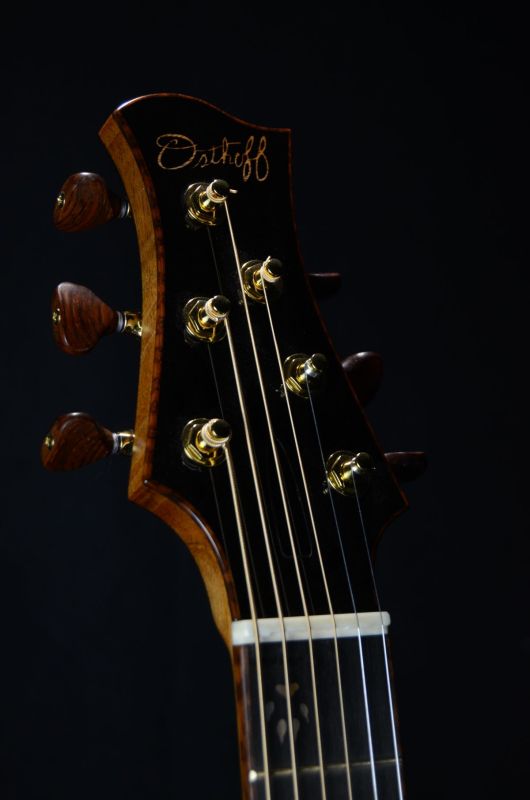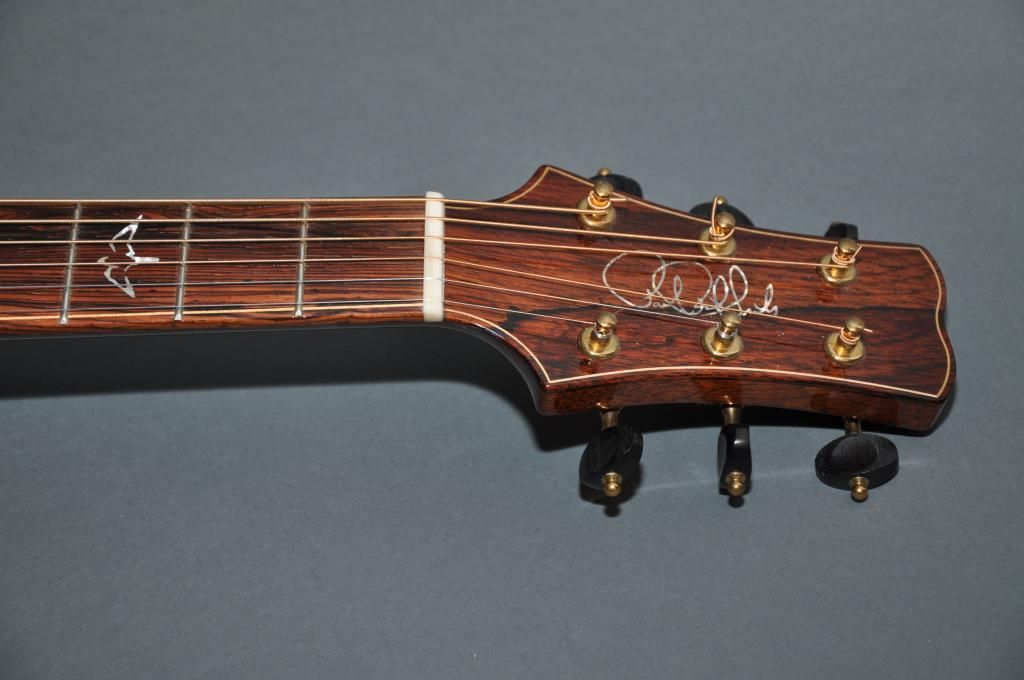
 |
|
#61
|
|||
|
|||
|
Quote:
|
|
#62
|
|||
|
|||
|
We all know how much everyone here loves Seagull headstocks. Need l say more?
__________________
Gibson J-45. Gibson J-15. Larrivee D-10. Taylor GS 5. Eastman E6 OM. Eastman E6 D. Bedell OH-12 Martin SPD-16TR. Bedell JB 52-G. Legend MJ-501. Arvey SJ Taylor GSRS. Breedlove American C20 S |
|
#63
|
|||
|
|||
|
Unless the break angle over the nut is at an extreme angle, nut slots can be cut carefully with a gentle curve which splits the difference between the headstock and fretboard string angles, and this should avoid any binding troubles experienced in this area. The "101" entry level nut slot cutting technique is to cut them straight. Cutting with gentle angles (vertical AND horizontal) avoids the string making two sharp "bends" or "turns" as it enters and exits the nut slot.
__________________
---- Ned Milburn NSDCC Master Artisan Dartmouth, Nova Scotia |
|
#64
|
|||
|
|||
|
Quote:
Last edited by Fusion01; 12-29-2015 at 05:37 PM. |
|
#65
|
|||
|
|||
|
Quote:
His study was looking at break angle over the saddle; he concluded that once you have enough of an angle to create enough bearing force to keep the string from slipping across the crown, there is no additional tonal advantage to having more. However, the break angle does indeed create more bearing force (and thus more friction) as it becomes more acute; it's simple physics.
__________________
1943 Gibson J-45 Martin Custom Shop 000-28 Authentic Aged 1937 Voyage Air VAOM-4 IBG Epiphone J-200 Aged Antique |
|
#66
|
|||
|
|||
|
Quote:
Quote:
for me it really helps to conceptualize the nut slot as a ring, or loop, or doughnut. no matter which way the string passing through it bends, it is always, and only, in one direction. what wonder is if it is easier to slot the nut for straight string pull. Last edited by mc1; 12-29-2015 at 07:14 PM. |
|
#67
|
|||
|
|||
|
The old Ovations used to have straight string pull over the nut.
|
|
#68
|
||||
|
||||
 Quote:
I worked on headstock design this for a long time. The straight string pull just makes sense to me. It took me more than a year to commit to the design. I was working on this before Gore came out with his books, but I will give him credit for the some process I used on the nut compensation. Leaving a more traditional headstock for this new design was sort of an agonizing decision as many potential buyers and clients are sort of locked into the more traditional look. One thing that can't really be seen in the photo is the stealth trussrod cover, but that is getting a little off topic, so I won't go into details in this thread. I had one client (who's opinion I value) tell me he didn't like headstock after I made the transition to the new design. A year later, he told me it was growing on him, and over time he began to like it. This design is a big departure from tradition. The nice thing about being a custom builder is I have the flexibility to change things up a bit as needed. I recently completed a guitar with a slothead, and I have custom order that will get a more traditional headstock (on the slope shouldered dread.) I (mostly) prefer build guitars with my SSP (straight string pull) headstock, but as mentioned it is nice to be able to change things when a design seems to warrant it. |
|
#69
|
||||
|
||||
|
Quote:
__________________
Tom '21 Martin D-18 Standard | '02 Taylor 814c | '18 Taylor 214ceDLX | '18 Taylor 150e-12 | '78 Ibanez Dread (First acoustic) | '08 CA Cargo | '02 Fender Strat American '57 RI My original songs |
|
#70
|
|||
|
|||
|
John, Really nice headstock. Congrats on one of the nicest I have seen!
As stated in one of my previous posts, the pulls are more for looks than for dramatic tonal differences. if you want to try an experiment, wind your low E and high E strings in the opposite direction. This will move the strings outward the width of the tuning peg and into a more parallel line. I doubt anybody would want to do this permanently as tuning will be in the opposite direction with this reversal but it is an easy enough experiment to undo. Not many things with guitars are this easy to test. Frank Sanns |
|
#71
|
||||
|
||||
|
This headstock is similar to the Osthoff shape, although slightly less straight on the inside strings. It is the smoothest tuning and best at staying in tune of any guitar I've owned. That's partly due to the tuning machines too, which are smoothest turning of any I've experienced. In general, PRS made a big effort to emulate a variety of best practices when designing these, and a straighter string pull seems to be a product of that process.
I bow to the master builders here on the physics of the thing, and I have to say my Martin, Collings and Santa Cruz acoustics have never caused me serious tuning problems attributable to nut slot friction. On the other hand, Gibson electrics, especially Les Pauls, are notorious for tuning instability due to string binding at the nut--especially the inside strings. Similarly, a Bigsby-equipped Gretsch is practically unplayable until you lubricate the nut slots. Are those nut slots simply cut too tight? I've always thought the bend angle at the nut caused the problem, but it seems only to apply to electric guitars. 
|
|
#72
|
|||
|
|||
|
Quote:

|
|
#73
|
|||
|
|||
|
That's a great looking headstock too. I love how the headstock facia is (or appears to be) the same piece of wood as the fretboard. I don't think I have ever seen that before.
|
|
#74
|
|||
|
|||
|
Thanks Aaron: you got it right.
So long as there's enough break angle at the end of the string so that it doesn't hop off the saddle all of the vibration force will be transmitted to the top. Similarly, at the nut end, once you get 'enough' break angle too stop the string vibrating behind the contact point, more won't help. More break angle, at either end, will, of course, increase the static forces imposed on the structure. At the bridge increasing the break angle does produce more downbearing, which might help a UST to work better, since they like lots of down pressure. More ominously, it also increases the tipping force trying to break out the front of the saddle slot. On the nut end the issue with more break angle and down force has to do with increasing the friction between the string and the slot. Iirc, that's going to be the product of the force and the coefficient of friction. Keeping the break angle at the nut down to the minimum, and polishing the slot, will both help. |